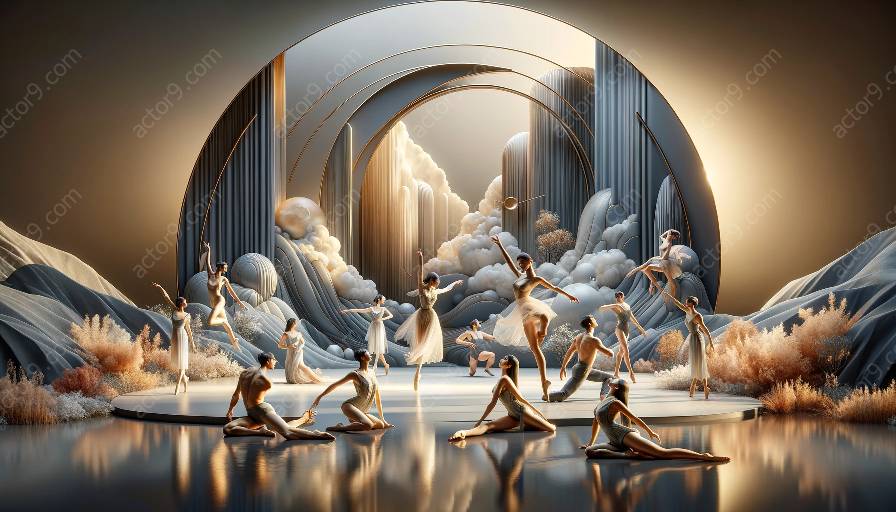Physical theatre is a dynamic and visually compelling form of performance that relies heavily on the innovative use of props and set design to create powerful narratives and engaging stage productions. This topic cluster will delve into the ways in which physical theatre harnesses the potential of props and set design to enhance storytelling and evoke emotional responses from audiences. Additionally, we will explore how these elements intersect with the broader spectrum of the elements of drama in physical theatre.
Understanding Physical Theatre
Before delving into the role of props and set design in physical theatre, it is essential to grasp the core essence of physical theatre itself. Unlike traditional theatrical forms, physical theatre emphasizes the use of the body as the primary storytelling instrument. Through expressive movements, gestures, and physicality, performers convey narratives, ideas, and emotions without heavy reliance on dialogue.
Physical theatre often amalgamates elements of dance, mime, acrobatics, and visual art to create performances that are characterized by their captivating visual impact and innovative use of space. The absence of elaborate sets and props common in traditional theatre places a heightened emphasis on the symbiotic relationship between performers and the stage, thereby making the incorporation of props and set design in physical theatre all the more significant.
The Art of Prop Utilization in Physical Theatre
Props in physical theatre are not merely embellishments but extensions of the performers themselves, serving as pivotal tools for expressing narrative and character development. Whether it's a simple object or a complex mechanism, props are carefully integrated into the choreography and performance, often assuming symbolic significance and driving the storyline forward.
One of the fundamental aspects of prop usage in physical theatre is the concept of object transformation. Performers adeptly manipulate props to morph them into various forms, defying their conventional utility and imbuing them with metaphorical meanings. The fluidity of prop transformation fosters an environment of surrealism and abstraction, enabling performers to transcend the ordinary and delve into the realm of poetic physical expression.
The Intricacies of Set Design in Physical Theatre
Set design in physical theatre serves as a canvas upon which the performance unfolds, accentuating the narrative and ambiance. The dynamic interaction between performers and the set design can create mesmerizing visual landscapes, invoking a sense of wonder and immersion in the audience. Unlike static backdrops of traditional theatre, the set design in physical theatre is often interactive, mutable, and integral to the progression of the performance.
Architectural elements, movable structures, and unconventional spatial configurations are frequently employed to transform the stage into a multidimensional realm that mirrors the emotional and psychological facets of the narrative. Set design in physical theatre is inherently collaborative, involving not only designers and technicians but also performers, as they actively engage with the set elements to propel the story forward through spatial dynamics and non-verbal interactions.
Interplay with Elements of Drama in Physical Theatre
The utilization of props and set design in physical theatre is intricately intertwined with the fundamental elements of drama, albeit with a distinct emphasis on visual storytelling. The element of space, in particular, takes on a profound significance as performers navigate and interact with the stage and its props, creating a seamless fusion of movement and dramatic tension.
Symbols and metaphors embedded within props and set design serve as potent vehicles for conveying themes, emotions, and abstract concepts. The element of symbolism, a cornerstone of dramatic expression, is amplified in physical theatre through the tangible manifestation of symbolic objects and spatial configurations, heightening the theatrical experience for both performers and audiences.
Moreover, the elements of time and rhythm in physical theatre are intricately interwoven with prop utilization and set design, as performers harness the temporal and rhythmic dimensions to craft mesmerizing sequences that transcend linguistic boundaries and resonate on a primal, instinctual level.
Conclusion
At its core, physical theatre is a celebration of the human form and its boundless capacity for expression. The seamless integration of props and set design augments this celebration, elevating performances to immersive spectacles that blur the boundaries between reality and imagination. By understanding the nuances of prop utilization and set design in physical theatre, one gains insight into the profound artistry and innovation that underpin this captivating form of theatrical expression.




































